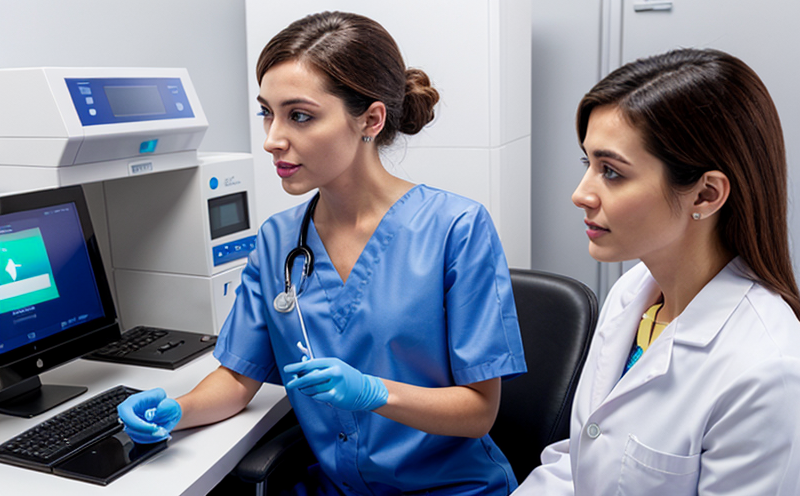Molecular Fingerprinting for Microbial Contaminants in Biopharmaceuticals
The advent of biopharmaceutical manufacturing has brought about a heightened need for stringent quality control measures to ensure the safety and efficacy of these products. Among the critical challenges is the detection, identification, and characterization of microbial contaminants present at minute levels within biologics. Molecular fingerprinting offers an unparalleled approach to addressing this challenge by providing a robust platform that can effectively detect even trace amounts of microbial contaminants.
Molecular fingerprinting for microbial contaminants in biopharmaceuticals leverages advanced nucleic acid-based technologies such as polymerase chain reaction (PCR), DNA sequencing, and mass spectrometry. These methodologies allow scientists to identify the unique genetic signatures or fingerprints of microorganisms, enabling precise differentiation between various species. This capability is particularly valuable in the context of biopharmaceutical production where even a single contaminant can have severe implications for product safety.
The process begins with sample collection and preparation. Samples are typically collected from bioreactors, storage tanks, or finished products. Preparing these samples involves lyophilization (freeze-drying) to concentrate the microbial cells and minimize contamination risks during subsequent steps. Once prepared, the samples undergo DNA extraction using appropriate protocols that ensure high-quality nucleic acids are obtained for downstream analysis.
Following DNA extraction, PCR is employed to amplify target regions of the genome known to be unique or conserved among specific genera or species of interest. This step increases the sensitivity and specificity of subsequent analyses. The amplified products can then be characterized using techniques like restriction fragment length polymorphism (RFLP), denaturing gradient gel electrophoresis (DGGE), or high-throughput sequencing technologies such as next-generation DNA sequencers.
The resulting data provides a detailed molecular fingerprint that serves as a signature for each microorganism present in the sample. This information can be cross-referenced against databases of known pathogens and non-pathogenic organisms to identify any potential contaminants. Importantly, this approach not only identifies but also quantifies microbial presence, allowing for comprehensive quality assurance.
The application of molecular fingerprinting extends beyond mere detection; it offers insights into the diversity and dynamics of microbial communities within biopharmaceutical manufacturing environments. This knowledge is crucial for understanding contamination risks, optimizing aseptic processes, and implementing targeted interventions to prevent future incidents. Additionally, this technology supports regulatory compliance by providing data that can be used to demonstrate adherence to stringent quality standards.
Moreover, molecular fingerprinting facilitates rapid response strategies in case of contamination outbreaks. By having pre-established fingerprints for all relevant microorganisms, laboratories can quickly determine the source and extent of any contamination event, thereby minimizing disruptions to manufacturing schedules.
Scope and Methodology
The scope of molecular fingerprinting encompasses a variety of testing parameters tailored specifically for identifying microbial contaminants in biopharmaceuticals. Key aspects include:
- Identification of bacteria, fungi, yeasts, and other microorganisms at sub-ppm levels.
- Detection limits down to 10 CFU/mL or lower depending on the sample type.
- Comprehensive analysis covering both known pathogens and opportunistic contaminants.
- Quantification of identified microbial species.
The methodology involves several critical steps:
- Sample Collection: Samples are collected from bioreactors, storage tanks, or finished products using sterile techniques to prevent cross-contamination.
- Preparation: Samples undergo lyophilization followed by DNA extraction using optimized protocols.
- Amplification: Target regions of the genome are amplified via PCR for enhanced sensitivity and specificity.
- Analytical Techniques: Amplified products are characterized using RFLP, DGGE, or next-generation sequencing technologies to generate molecular fingerprints.
- Data Analysis: The resulting data is compared against reference databases to identify and quantify microorganisms present in the sample.
This systematic approach ensures accurate and reliable identification of microbial contaminants, supporting robust quality control processes within biopharmaceutical manufacturing.
Competitive Advantage and Market Impact
- Innovation Leadership: Our laboratory is at the forefront of developing cutting-edge molecular fingerprinting techniques, continuously pushing boundaries to enhance detection capabilities.
- Regulatory Compliance: With expertise in aligning methodologies with international standards such as ISO 14648 and US FDA CGMP, we ensure our clients remain compliant.
- Predictive Analytics: By offering detailed insights into microbial dynamics within manufacturing environments, we empower decision-makers to implement proactive strategies that minimize contamination risks.
- Cost Efficiency: While initially expensive, the long-term benefits of preventing costly recalls and product rejections make this technology a sound investment for any biopharmaceutical company.
Molecular fingerprinting is increasingly recognized as an indispensable tool in maintaining high standards of quality control within the biopharmaceutical industry. Its ability to provide precise and rapid detection of microbial contaminants ensures that products meet stringent safety and efficacy criteria, thereby building consumer trust and enhancing market reputation.
Use Cases and Application Examples
Molecular fingerprinting finds extensive application across multiple sectors within the biopharmaceutical industry. Here are some key use cases:
- Quality Assurance: Routine testing of raw materials, intermediates, and final products to ensure compliance with quality standards.
- Process Optimization: Monitoring microbial populations in production environments to identify potential contamination hotspots and optimize aseptic processes.
- Risk Management: Early detection of contamination risks during product development phases to implement necessary controls and prevent costly disruptions.
- Outbreak Investigation: Rapid identification and quantification of contaminants following an outbreak, facilitating swift containment measures.
- Certification Compliance: Providing comprehensive data that supports regulatory submissions for new biopharmaceutical products entering the market.
In conclusion, molecular fingerprinting plays a pivotal role in safeguarding biopharmaceuticals by ensuring they are free from harmful microbial contaminants. Its versatility and precision make it an essential component of modern quality control practices.





